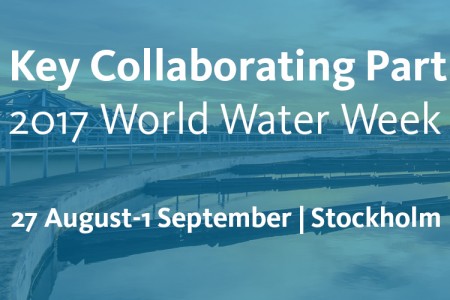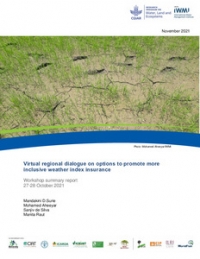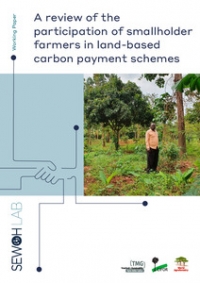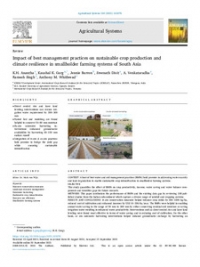This piece was originally published by the Thomson Reuters Foundation. Read the original article.
Better access to irrigation for farmers is key for climate change adaptation. Until recently, irrigation had never taken off in Africa for multiple reasons from poor maintenance planning to lack of inputs and market access. Many donor and government-funded large and small-scale irrigation schemes lay dry after a few years of exploitation.
Water experts estimate that only 4 to 7 percent of arable land is irrigated in Sub-Saharan Africa (SSA), the lowest ratio across the world. Over the past decade, donors have renewed their interest in funding irrigation projects to tackle the high food insecurity in the region. Experts predict that irrigated areas in SSA from 1998 to 2030 will increase by 30 percent. There are also opportunities to improve the performance of existing irrigated areas.
In a special series on small-scale communal irrigation in South-Eastern Africa published earlier this year, farming systems experts are calling for donors to avoid failures of the past by developing a viable, sustainable and inclusive business model for small-scale public irrigation schemes in Sub-Saharan Africa. This work is led by the Australian National University including partners like International Crops Research Institute for Semi-Arid Tropics (ICRISAT) in Zimbabwe. It was funded by the Australian Center for International Agricultural Research and the Water, Lands and Ecosystems CGIAR research programme.
Andre Van Rooyen, one of the co-authors, from ICRISAT Zimbabwe, explains the complexity of efficiently running a small scale irrigation scheme in Southern Africa. “To make these irrigation schemes more profitable and sustainable for the farming community, irrigation users should be able to experiment with different crops, watering regimes and markets. You also need to find the right farmer-centered governance so that maintenance runs smoothly, and everybody agree collectively to contribute his or her share of costs, responsibilities and benefits. This is easier said than done as you have many different actors each with their own interests and perspectives.”
“You aim at improving the efficiency of irrigation system at multiple levels, reducing the labour required, the water used, better use of fertilizers with careful choice of crops and farming practices to maximize output per drop. You also have to make sure that markets work for farmers so that they are eager to invest in the irrigation system maintenance and farming inputs for the next crop” he adds.
The transfer of irrigation management from public institutions to local water user associations since the 1980s in Africa has always been difficult as the transfer has rarely translated into ownership. No clear boundaries of plots, under-representation of marginalized groups in irrigation groups, for instance women, means there is uneven distribution of water and benefits.
Conflicts of interests often occur, collection of maintenance fees trickle down after a while and many schemes are now obsolete. Many irrigation systems were not built with smallholdings in mind, but more as small-scale models of large public schemes. Technically they are often too advanced (80% of smallholder irrigation devices are manual) and once a piece is broken, e.g an electrical motor pump, user groups have no way to fix the whole system.
Another example of mismanagement of water is when water is distributed on a weekly roster, it leads to overwatering the fields, and loss of much of the fertilizers, as farmers will irrigate their crops whether it is required or not.
A comparative study of six irrigation schemes in Zimbabwe, Tanzania and Mozambique showed that investing in a participatory space called agricultural innovation platform (AIP) opens up new ways of managing water and crops to increase the profitability of each water user. Here farmers, agricultural and water engineers as well as market operators and any other relevant stakeholders to the irrigation scheme, can engage and experiment together.
In the 450 hectares Silalatshani Irrigation Scheme, one of the oldest in Zimbabwe, farmers have learned how to use the Chameleon, a low cost tool to measure soil water moisture availability for the crops through a color code, easy to recognize even for illiterate farmers. Another device, the Full stop, has helped farmers understand when fertilizers are washed away by excessive irrigation. Farmers began to only use water when crops really needed it (every two to three days instead of daily) and realized this saved a lot of water. This ultimately reduced water conflicts between water users.
Collective problem solving reaps rewards
AIP members learn to ask the “why” several times to understand the root causes of their problem, gaining confidence in their collective problem solving ability. For instance, in the Magozi scheme in Iringa district, Tanzania, only 750 hectares out of a potential of 1,300 ha are irrigated, where farmers produce a meagre one to two tons of rice per hectare. Rice farmers complained about the low prices of their rice harvests and came up with the idea of organizing themselves to collectively sell the rice, invest in storage to be able to later sell when prices are more attractive, and grow varieties that are in higher demand. Farmers are asked during the first sessions of the innovation platform to draw a current map of the irrigation scheme as well as a desired vision for 2019. AIP members visualize what needs to be done, who should intervene and the priorities.
In a development intervention, technological innovations are often presented as a quick-fix solution, but the human factor is often much more important. “When the group visualize on paper where they want to go, this creates discussion on the ‘people’ side of the problem which is often more difficult to articulate,” says Van Rooyen.
More important than looking for ‘technological interventions’ to boost water and farming efficiency, irrigation interventions should focus on investing in building inclusive institutions like Silalatshani and Magozi innovation platforms where members learn step by step to use water more efficiently, earn more per drop and build skills and social connections to become more resilient and prosperous.
This research will be discussed during a World Water Week session, African smallholder irrigation: double yields with half the water! in Stockholm on 30th August 2017.






/index.jpg?itok=EzuBHOXY&c=feafd7f5ab7d60c363652d23929d0aee)









